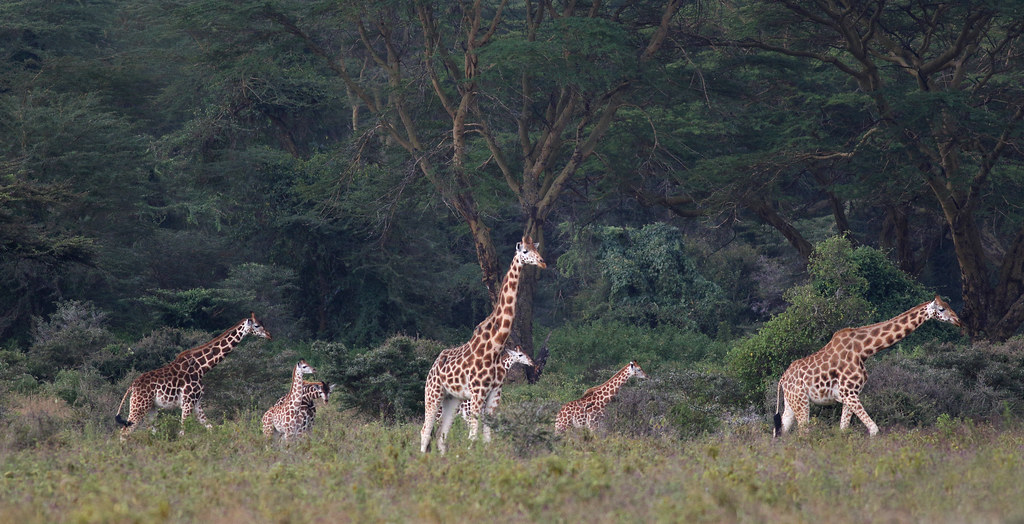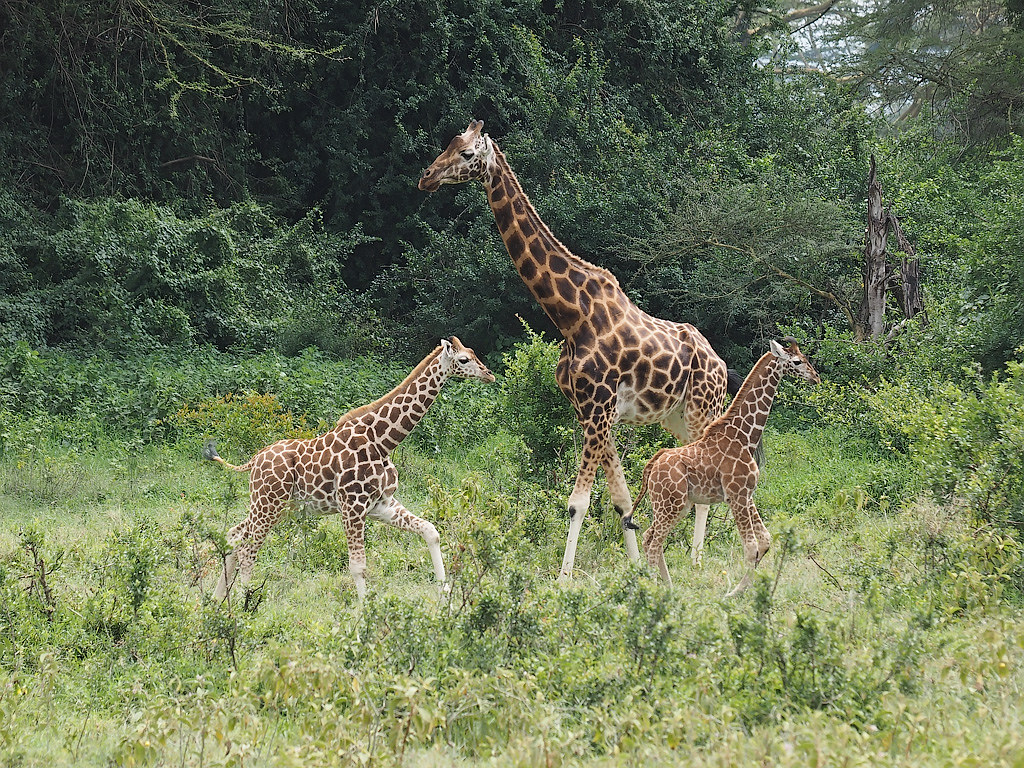
Conservation of Rothschild’s giraffe in Uganda
Conservation of Rothschild’s giraffe in Uganda
The protection of Rothschild’s giraffe in Uganda is credited to Lionel Walter Rothschild. The Nubian giraffe, also known as the Ugandan giraffe in Uganda and the Baringo giraffe in Kenya, was named after Lionel Walter Rothschild, who first characterized the subspecies in the early 20th century. The famous British naturalist believed that the giraffe constituted a singular species. Recent genomic research by the Giraffe Conservation Foundation (GCF) indicates that there are four separate species of giraffes in Africa. The species comprise the northern giraffe, reticulated giraffe, Maasai giraffe, and southern giraffe. The northern giraffe is specifically categorized into three subspecies. The West African giraffe, the rarest species with approximately 400 individuals remaining solely in Niger; the Kordofan giraffe, located in Zakouma National Park in Chad, managed by the African Parks Network; and the Nubian giraffe, distributed across eastern South Sudan, Ethiopia, Uganda, and western Kenya.
Murchison Falls National Park in Uganda is home to approximately 1,575 Nubian giraffes, constituting over 50% of the subspecies’ population in Africa. In contrast to other animal species like as buffaloes and elephants, giraffes were not pursued by poachers, facilitating an increase in their population. Conversely, poachers targeted black rhinos, which became extinct during the Ugandan civil conflicts of the 1970s and 1980s.
The Rothschild giraffe population was predominantly impacted in Kidepo Valley National Park, located in the semi-arid Karamoja region in northeastern Uganda, adjacent to the borders of South Sudan and the Turkana region of Kenya. According to statistics from the Uganda Wildlife Authority, only 3 out of around 400 individuals residing there remained by 1997. Numerous animals were illegally hunted during Idi Amin’s presidency in Uganda from 1972 to 1979. An army barracks was erected atop Mount Moroto, located immediately south of the park, where it is reported that the famished troops would enter the park to procure meat from the animals.
Nonetheless, the majority of poaching, as indicated in a report by the Uganda Conservation Foundation, was perpetrated by young Karamojong warriors. As cattle represent riches and giraffe tails are deemed valuable and sacred, boys lacking cows to fulfill the wedding price would resort to poaching giraffes. The tails would thereafter be utilized to acquire cattle or presented as a dowry to secure a spouse. This behavior undoubtedly contributed to the decline of the Rothschild’s giraffe population in Kidepo Valley. Moreover, giraffes have disappeared from additional protected places in the region, such as Pian Upe, Matheniko, and Bokoro Wildlife Reserves. The competition for cattle among the Karamojong and other warrior tribes, including the Pokot and Kalenjin, incited cattle rustling, escalating into armed conflict due to their possession of firearms. The Karamoja issue is attributable to various factors, including land loss owing to conservation efforts and the recent discovery of mineral riches.
Prior to the extinction of giraffes in Narus Valley, the Uganda Wildlife Authority implemented measures to rehabilitate their population and stationed rangers to protect the park. A collaboration with Kenya Wildlife Services (KWS) was established to facilitate the transfer of 5 giraffes from Lake Nakuru National Park in 1997. The park located in the Rift Valley serves as a sanctuary for black rhinos and flamingos. The terrain’s characteristics hindered the capture of all five individuals; only three females, together with a male known as Nakuru giraffe, were transported to Kidepo Valley National Park, resulting in a total of six at that time. Subsequently, the male was slain by lions in the park; however, mating had occurred, enabling the females to produce progeny. Since that time, the population has increased, and approximately 60 Rothschild’s giraffes currently inhabit Kidepo.
Augmenting conservation initiatives
The Uganda Wildlife Authority, in collaboration with the Giraffe Conservation Foundation, launched conservation translocations to guarantee the sustained growth and equitable distribution of giraffes inside protected savanna regions. The giraffes were to be relocated from Murchison Falls National Park, where their population is relatively abundant, to Lake Mburo National Park and Kidepo Valley National Park. The objective for Kidepo was to mitigate the impact of inbreeding resulting from a single male Nakuru progenitor. Consequently, 14 giraffes were relocated from Murchison Falls to Kidepo in 2018. Fifteen giraffes were introduced to Lake Mburo National Park a year prior, and their population has already risen to 24. Nineteen giraffes were relocated across the Nile River from northern Paara to the southern section of Murchison Falls, where their population has increased to 45.
Request for clarification regarding the nomenclature: Rothschild or Nubian?
Conservation of Rothschild’s giraffe in Uganda
Giraffes in Murchison Falls National Park
Taxonomists unanimously concur that the designation Nubian giraffe precedes others due to its indigenous status in Africa. Nonetheless, it has been supplanted by the designation Rothschild, denoting the individual who researched the species in the early 20th century. Consequently, this has exacerbated disputes among numerous safari guides in East Africa on the appropriate nomenclature to be utilized. The designation Rothschild’s is primarily applied to the giraffes found in Uganda and Kenya. However, there is no detriment in using Nubian and Rothschild interchangeably. Moreover, there are disputes on whether the giraffes in the Gambella region of southeastern Ethiopia are identical to Rothschild’s giraffe. The genetic comparisons conducted by the Giraffe Conservation Foundation demonstrated that the species are, in fact, identical.
Premier national parks for observing giraffes in Uganda
Murchison Falls National Park
Conservation of Rothschild’s giraffe in Uganda
Murchison Falls National Park is the premier place in Uganda to observe the Rothschild’s giraffe, housing 1,575 individuals, which is over 50% of all Nubian giraffes in Africa. The park hosts over 451 avian species, including the Shoebill stork, as well as lions, elephants, buffaloes, hippos, and crocodiles along the Nile River. Game drives, Nile boat excursions, and hot air balloon safaris are all available for animal observation. The remarkable ascent to the summit of the falls is the pinnacle of any excursion. A honeymoon trail exists south of the Nile River, where one may observe giraffes wandering with a ranger.
Lake Mburo National Park Rothschild’s giraffe conservation
Situated 234 km (a 4-hour drive) south-west of Entebbe Airport and Kampala, Lake Mburo National Park is among the most accessible savannah parks in Uganda. While traveling to Bwindi for gorilla trekking, you may also take a respite from the lengthy journey. There are 24 giraffes, and due to the absence of lions or elephants, it is secure for guests to explore the African bush with a ranger. Cycling is an alternative method for observing wildlife in Lake Mburo. Zebras and impalas are among the 69 mammal species exclusively found in the safari locations of western Uganda.
Kidepo Valley National Park Rothschild’s giraffe conservation in Uganda
Kidepo is about 700 kilometers (an 11-hour trip) northeast of the capital city, Kampala. A chartered flight from Entebbe International Airport provides rapid access to the destination. Upon arrival, you will find yourself in Africa’s most scenic park, as reported by CNN Africa. The expansive Narus Valley is bordered by arid volcanic mountain ranges, notably Mount Murongole, which is home to Uganda’s smallest tribe, the IK. They are considered a minority by the Karamojong cattle warriors, whom you may encounter during your stay to Kidepo. The seasonal wetlands and perennial water in the valley sustain 77 species of mammals. This includes tree-climbing lions, leopards, Rothschild’s giraffes, elephants, and a notable herd of nearly 4,000 buffaloes. Over 476 bird species exist, some of which are native to the Karamoja region, including the Karamoja Apalis and the ostrich. Due of the region’s semi-arid environment, certain animal species in Kidepo are challenging to locate in other parks. This list comprises cheetahs, ostriches, aardwolves, striped hyenas, bat-eared foxes, among others.



